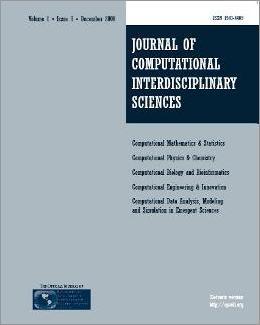
Editorial Office:
Management:
R. S. Oyarzabal
Technical Support:
D. H. Diaz
M. A. Gomez
W. Abrahão
G. Oliveira
Publisher by Knobook Pub


Editorial Office:
Management:
R. S. Oyarzabal
Technical Support:
D. H. Diaz
M. A. Gomez
W. Abrahão
G. Oliveira
Publisher by Knobook Pub
doi: 10.6062/jcis.2009.01.02.0017(Free PDF)
Carlos Henrique da Silva Santos, Kleucio Claudio, Marcos Sergio Goncalves, Juliano Rodrigues Brianeze and Hugo Enrique Hernandez-Figueroa
This work presents the efficiency and the stochastic nature of three bio-inspired algorithms combining four different probability density functions (PDF) to design Microstrip Antennas (MSAs). The project of MSAs considers single and multi-objective versions. The algorithms examined are Genetic Algorithm (GA), Evolution Strategies (ES) and Artificial Immune Systems (AIS). In these algorithms, bandwidth (BW), standing wave rate (SWR) and radiation efficiency (RE) are parameters to be optimized. The results show interesting computational performance of the algorithms in single and multi-objective applications, combining different PDFs and bio-inspired algorithms. Other interesting result is presented when there is absence of memory resource. These results emphasize the efficiency of the algorithms to optimize MSAs and the possibility to apply in others electromagnetic problems.
Microstrip Antenna Design, Computational Electromagnetism, Bio-Inspired Algorithms, Multi-objective Optimization.
[1] ABRANTES AA & MARTINS LM. 2007. A produção do conhecimento científico: relação sujeito-objeto e desenvolvimento do pensamento. Interface Comunicações, 11: 313-325.
[2] CAMPELO F, GUIMARAES FG, IGARASHI H & RAMÍREZ JA. 2005. Clonal Selection Algorithm for Optimization in Electromagnetics. IEEE Transactions on Magnetics, 41(5): 1736-1739. 10.1109/TMAG.2005.846043
[3] HAUPT RL & WERNER DH. 2007. Genetic Algorithms In Electromagnetics. John Wiley & Sons, New Jersey. 10.1002/9780470106280.ch3 (2006)
[4] MITCHELL M. 1998. An Introduction to Genetic Algorithms. The MIT Press, Massachusetts.
[5] BRECKLING J (Ed.). 1989. The Analysis of Directional Time Series: Applications to Wind Speed and Direction, ser. Lecture Notes in Statistics. Berlin, Germany: Springer, vol. 61.
[6] DE CASTRO LN. 2006. Fundamentals of Natural Computing Basic Concepts, Algorithms, and Applications. Chapman & Hall/CRC, Florida.
[7] DE CASTRO LN & TIMMIS J. 2002. Artificial Immune Systems: A New Computational Intelligence Approach, Springer-Verlag, Great Britain.
[8] LIU F, WANG Q & GAO X. 2004. Survey of Artificial Immune Systems. IEEE International Conference on System, Man and Cybernetics, 4: 3415-3420. 10.1109/ICSMC.2004.1400870
[9] FRANÇA FO. 2005. Algoritmos Bio-Inspirados Aplicados a Otimização Dinâmica. M.Sc. Thesis, School of Electrical and Computer Engineering, Unicamp, Campinas,
[10] BALANIS CA, 2005. "Antenna Theory: Analysis and Design", John Wiley & Sons, Inc.
[11] LEE KF, CHEN W. 1997. Advances in Microstrip and Printed Antennas. J. Wiley & Sons, New York.
[12] CST Microwave Studio 2006B, www.cst.com (accessed in March, 2008).